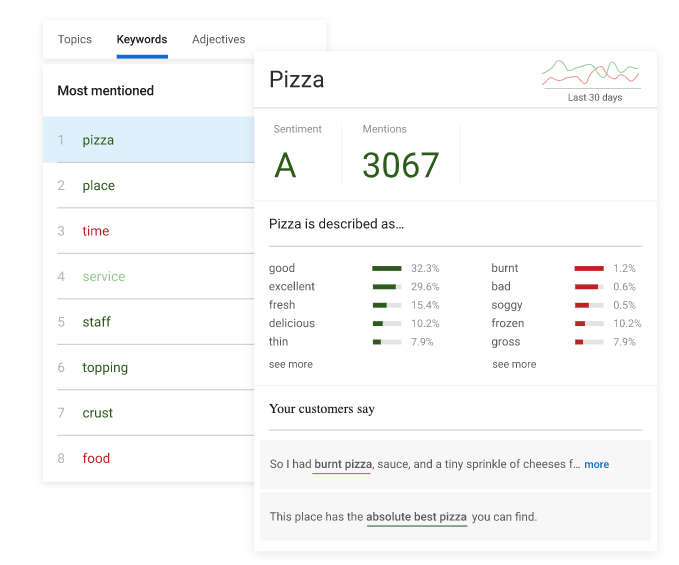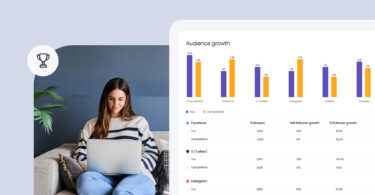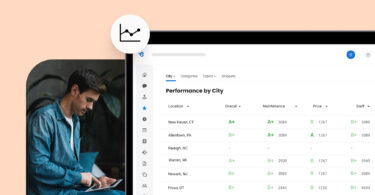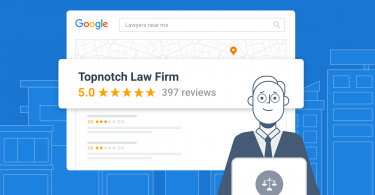What does my customer want? This is a question that keeps many business owners up at night. While creating or marketing a product or a service, every business owner craves customer insight — which is knowledge and understanding of their customers’ needs, wants, and thoughts.
Let’s talk about David’s Bridal
Let me tell you a story about how actionable deriving customer insights from customer feedback can result in providing a stellar customer experience to customers. David’s Bridal, a bridal boutique chain ran a pilot program in 32 locations, where they used customer feedback to understand what was working and what was not. They had thousands of customer reviews. The challenge was to identify actionable insights from this data. David’s Bridal turned to Birdeye ‘Insights’ which allowed them to run machine learning on their reviews. They were able to define categories based on their business’s operational metrics and measure the performance for each of their locations — an ‘apple to apple’ comparison.
They noticed that they were able to provide a great customer experience to their customers. Their product range was loved, the ambiance was appropriate and the staff was courteous. From the mountain of data, they noticed that there was some dissatisfaction with their alteration services. They further noticed that this pattern was noticed during weekends. The boutique had alteration services throughout the week but on the weekends the service was not available leading to a less than ideal customer experience. Once they had this vital piece of information, they were able to quickly make changes and turn the situation around.
Businesses are turning to natural language processing (NLP) and machine learning to harness the power of data and understand customers’ behavior. Before we dive into how exactly Birdeye uses NLP and machine learning to get you amazing customer insights, let’s first try and understand what these processes mean.
In this blog post we will focus on:
Table of contents
What is Natural Language Processing (NLP)?
Wikipedia defines NLP as a subfield of linguistics, computer science, information engineering, and artificial intelligence concerned with the interactions between computers and human (natural) languages, in particular how to program computers to process and analyze large amounts of natural language data. Wow Wikipedia, thought you’d have a simple answer.
In plain English, NLP helps computers understand, interpret and manipulate human language. NLP has an increased significance because most of the communication that you receive from your customers is through a device. Everyone is knowingly or unknowingly using NLP every day. Every time you see auto-correct or auto-complete on your email, that’s the magic of NLP right there for you.
Machine translation, like for example Google Translate, is one of the biggest applications of NLP. Let’s talk numbers for a second. Google Translate translates more than 100 billion words a day — oh man, that’s a lot of words.
What is machine learning?
MIT Technology review defines machine learning as the algorithms that use statistics to find patterns in massive amounts of data. And data, here, encompasses a lot of things—numbers, words, images, clicks, what have you. If it can be digitally stored, it can be fed into a machine-learning algorithm.
Machine learning is everywhere. Think of your typical evenings after work when you are scrolling through Netflix trying to decide what to watch. You know, that “Recommended for You” section? Netflix learns about the shows you might like based on the other shows you have watched on Netflix. These suggestions are an example of machine learning. Machine learning helps search engines like Google, social media like Facebook and Instagram (yes, that’s how your news feeds are populated) and so much more.
How can NLP and machine learning help businesses?
NLP and machine learning algorithms capture what customers are saying. This is now on all channels (think review sites, and social media), including their competitors.
For years, businesses have been able to run NLP on internal surveys to drive business insights. For example, Birdeye has revolutionized the capabilities of NLP by expanding it to all channels of customer feedback. These include review sites, and social media too. You can now implement Birdeye’s platform to understand your customers’ conversations. It works with mystery shopping, social media, and online review sites with equal accuracy. And the best part is that you get to see all the results in one place.
That’s not all. Businesses get a leg up by running NLP, not only on their own customers’ feedback but also on their competitors’ public data. Today, public data means that NLP taps into hundreds of review sites and social media sites (some of which you probably haven’t even heard of).
With Birdeye, businesses can capture deep insights from their competitors’ customer feedback as well. For example, let’s talk about a car rental business, Hertz Rent-A-Car. Hertz can use Birdeye’s extensive intel to determine if the check-in wait time is too long at their San Francisco location. They can also see how their wait time compares to wait times at Avis or Enterprise. This informed sense of their competitors’ customer experience and sentiments can provide an invaluable strategic advantage.
Machine learning adds adaptability to insights
You might be getting a ton of reviews. But, if you aren’t able to convert all that data into actionable insights — what’s the point? Imagine this: you have a steady stream of patients at your medical practice. However, your patients are consistently late for their appointments, which creates a loss of time and revenue.
All your patients leave favorable reviews with a good star rating, so you don’t read the reviews super closely. However, after you start monitoring your reviews you notice that every other review mentions the difficulty in finding a parking spot. You have visitor parking behind your building and mention this info in appointment emails, which fixes the issue. This means that your patients are happy and so are you.
Using reviews for better customer insights
So, how do you gain customer insights? If you thought reviews are just for your customers, you thought wrong. Business owners who think that just getting reviews is enough are missing out on all the added advantages of having reviews. Reviews are all-around beneficial. They help customers find and choose a business and there is so much that a business can learn from reviews too.
Using online reputation management software (we know of a really good one), business owners can also group relevant keywords together to measure different areas of the business. For example, if you are a restaurant owner, you can group drinks, beverages, and cocktails into one group, while grouping staff, service, and waiters into another. You get the idea. So when you see the words good and great being associated with one group and the words bad or rude with the other (imagine a cocktail being rude) you understand where you need to improve.

To be able to use reviews for good, actionable customer insights, here are a few things you need to take care of:
- Have reviews. Machine Learning and NLP work best with bigger sets of data. Imagine analyzing data patterns on 5 reviews versus 500 reviews. With more reviews you get better insights — it’s that simple. Be sure to ask all your customers for reviews. For the best ROI, you should create an uninterrupted flow of reviews by sending out automated review requests.
- Add keywords. When you add a keyword trigger to your online reputation management software, it helps you catch data relevant to it. Everything also depends on how you identify keywords. For a medical practice, adding keywords like doctor, staff, nurse, wait time or insurance makes sense. For a real estate agent, keywords such as sale, agent or budget deliver the best results. Understanding keywords that work best for your business and your industry is key to getting rich results.
How can Birdeye help you?
Birdeye’s NLP engine, Athena, humanizes big data so you can understand the sentiments expressed in feedback and improve operations at the location and corporate levels. NLP and Machine learning help in seeing patterns. What are some of the most often associated words in your reviews? Birdeye’s algorithm helps in spotting sentiment trends by topic. You can also easily group relevant keywords together.
To ensure accuracy and adaptability, Birdeye has integrated its NLP system with the latest machine learning technology. Many companies strictly use Machine Learning as a black-box technology without understanding the type of data it was designed to process. This can result in misguided, inaccurate predictions. These black-box technologies can struggle with unstructured, unpredictable customer reviews that differ from past data patterns. Birdeye has instead built custom machine learners for the channels that matter to businesses.
“Our goal is to unlock the full potential of NLP and machine learning for businesses. At Birdeye, we are continuously processing a large volume of customer feedback for businesses and their competitors. We are analyzing both structured and unstructured content to identify rich snippets that convey customers’ overall sentiment. We provide such valuable insights to businesses in real-time so that they can incorporate and enhance their customer experience.”
says Ameya Virkar, VP Engineering at Birdeye.
By combining the latest machine learning technology with modern linguistic customer insights, Birdeye has pioneered a uniquely intelligent platform with the ability to identify crucial new trends and topics in the customer base that traditional analytics misses.
“We train our learning algorithms from the ground up on the data that matters most to companies. This allows our software to provide more precise analysis about what customers are saying.”
says Nate Chambers, Chief NLP Scientist for Birdeye.
With Birdeye, you can collect and leverage reviews to get better customer insights. Birdeye’s all-in-one experience marketing platform enables businesses to get new reviews, manage and respond to reviews from over 250 sites, automatically share posts on social media, and receive actionable insights through Natural Language Processing. All from a single dashboard.

Originally published









